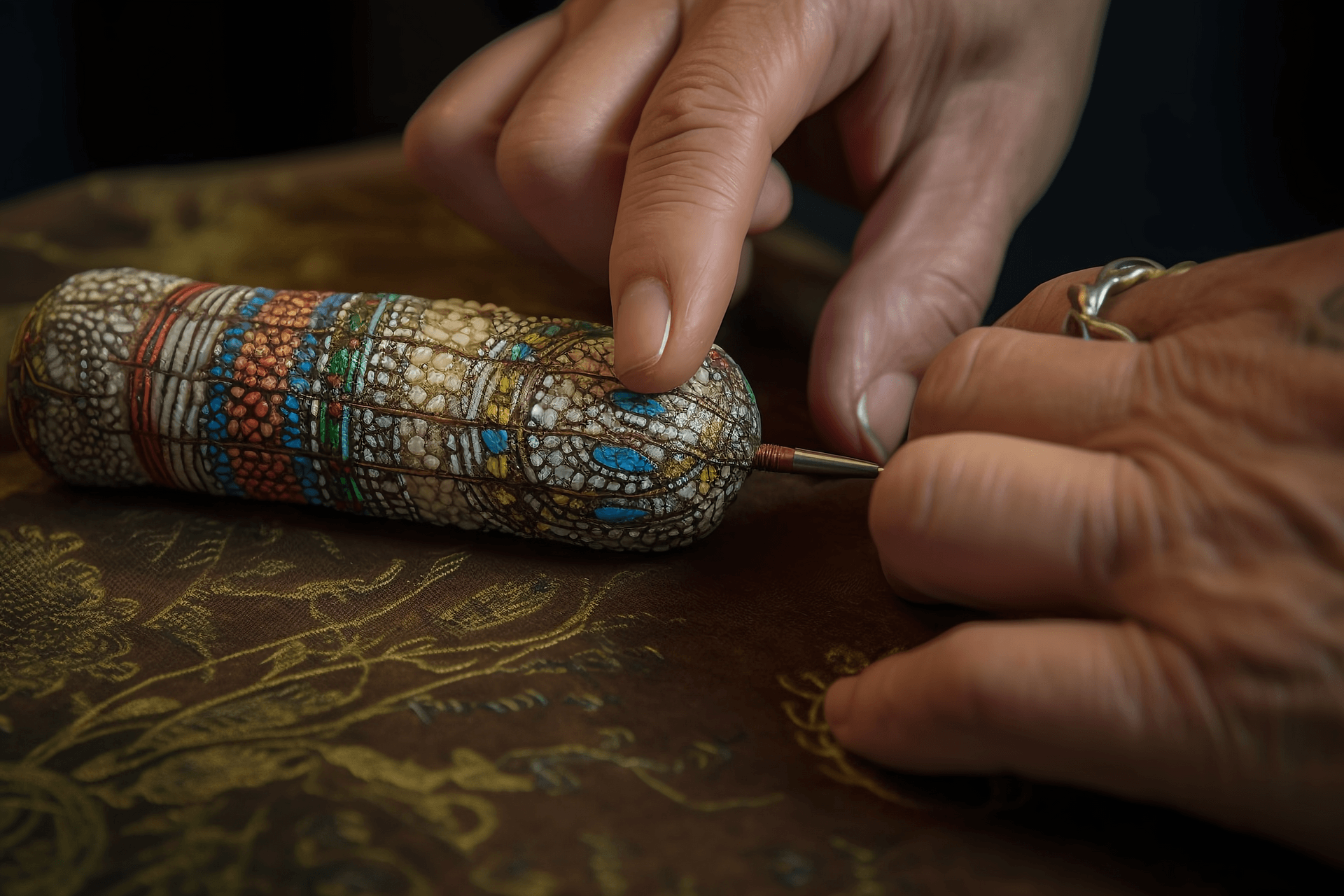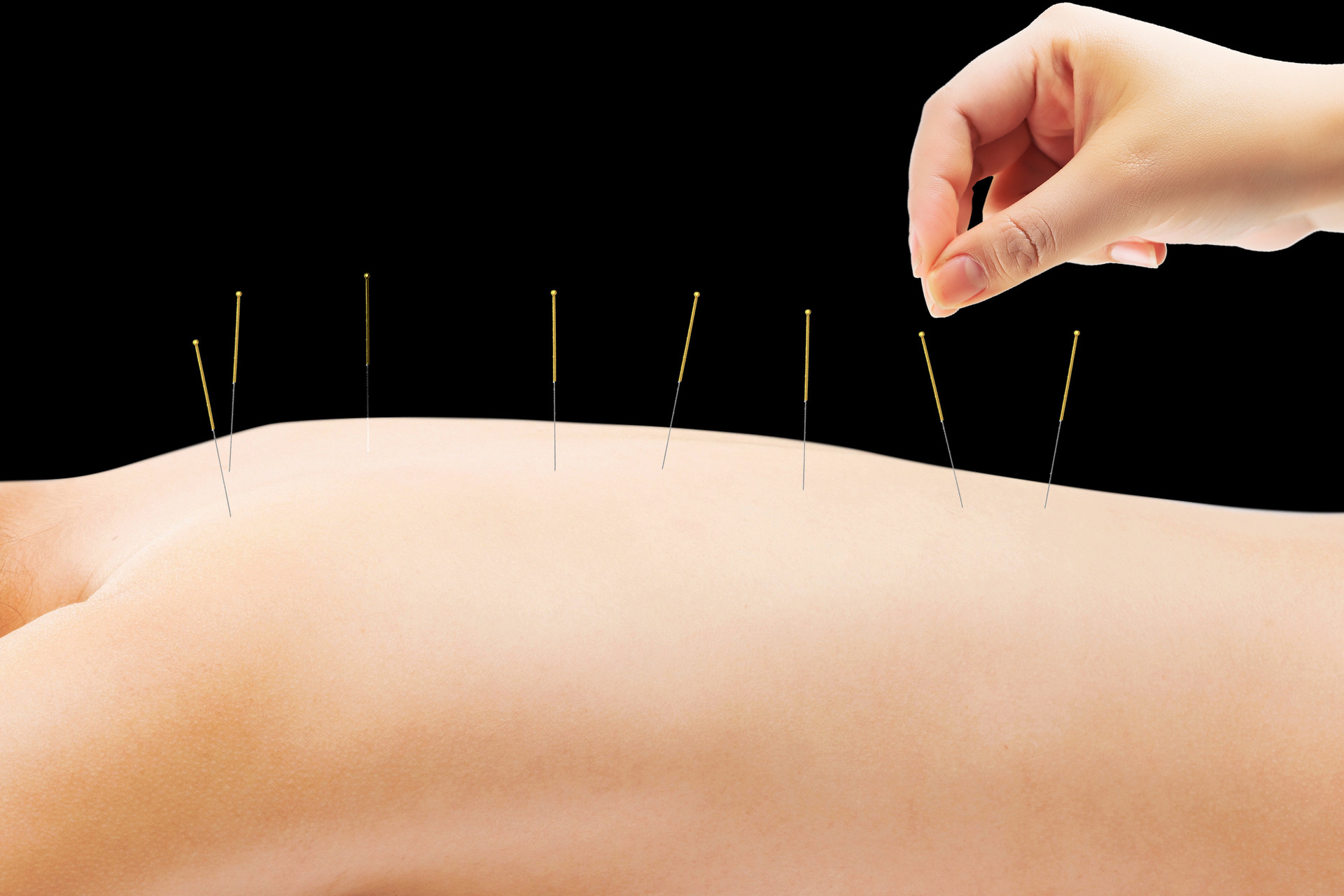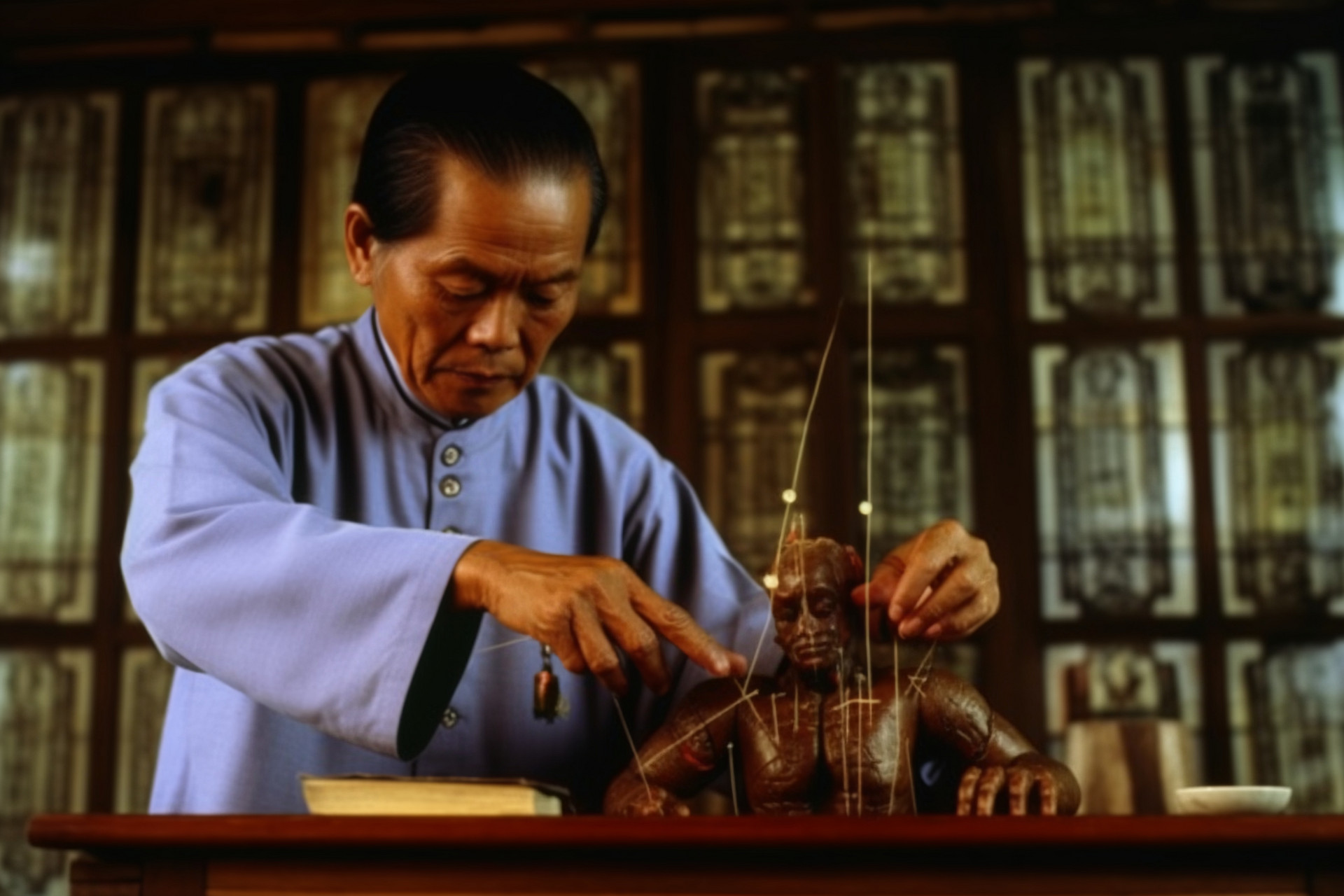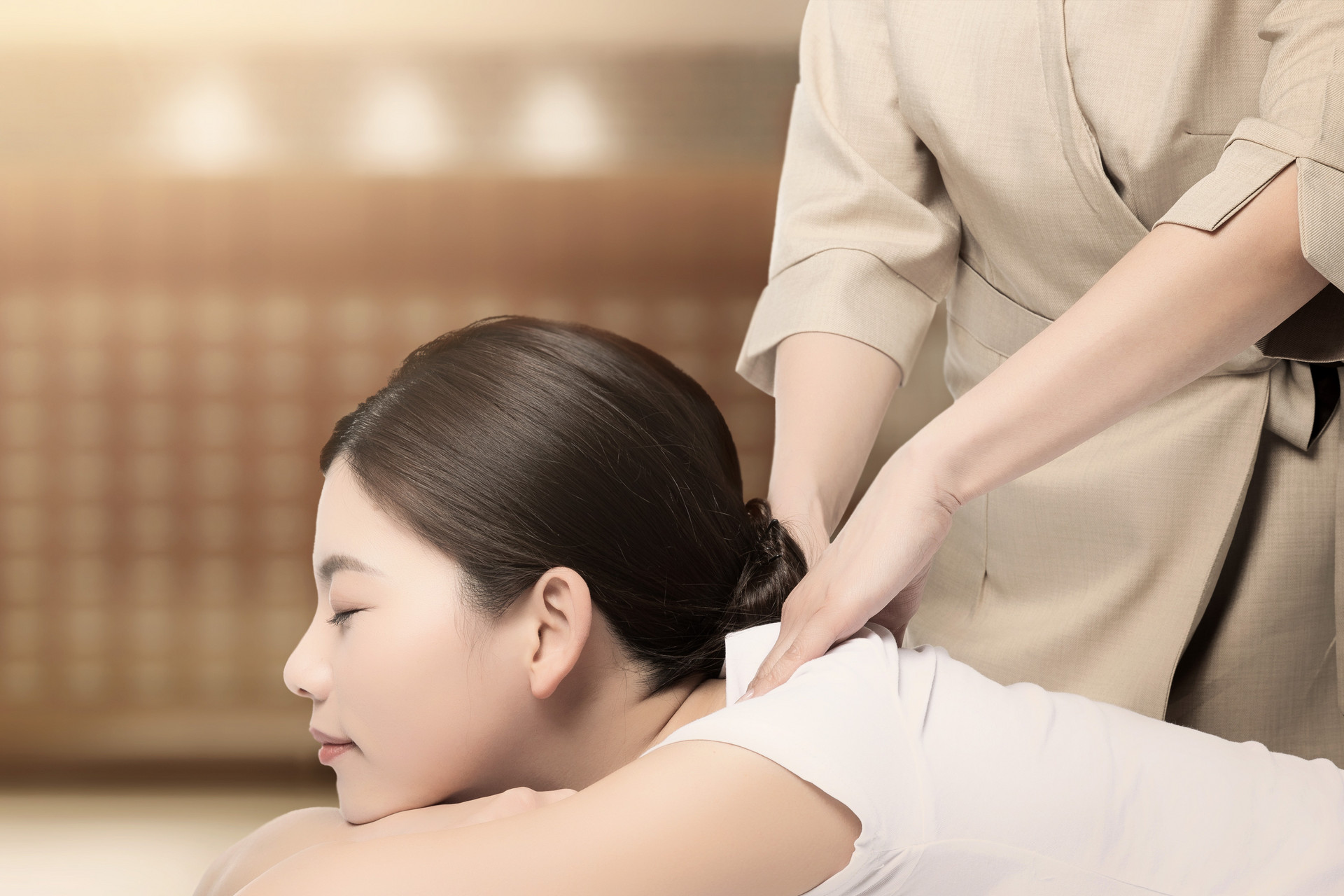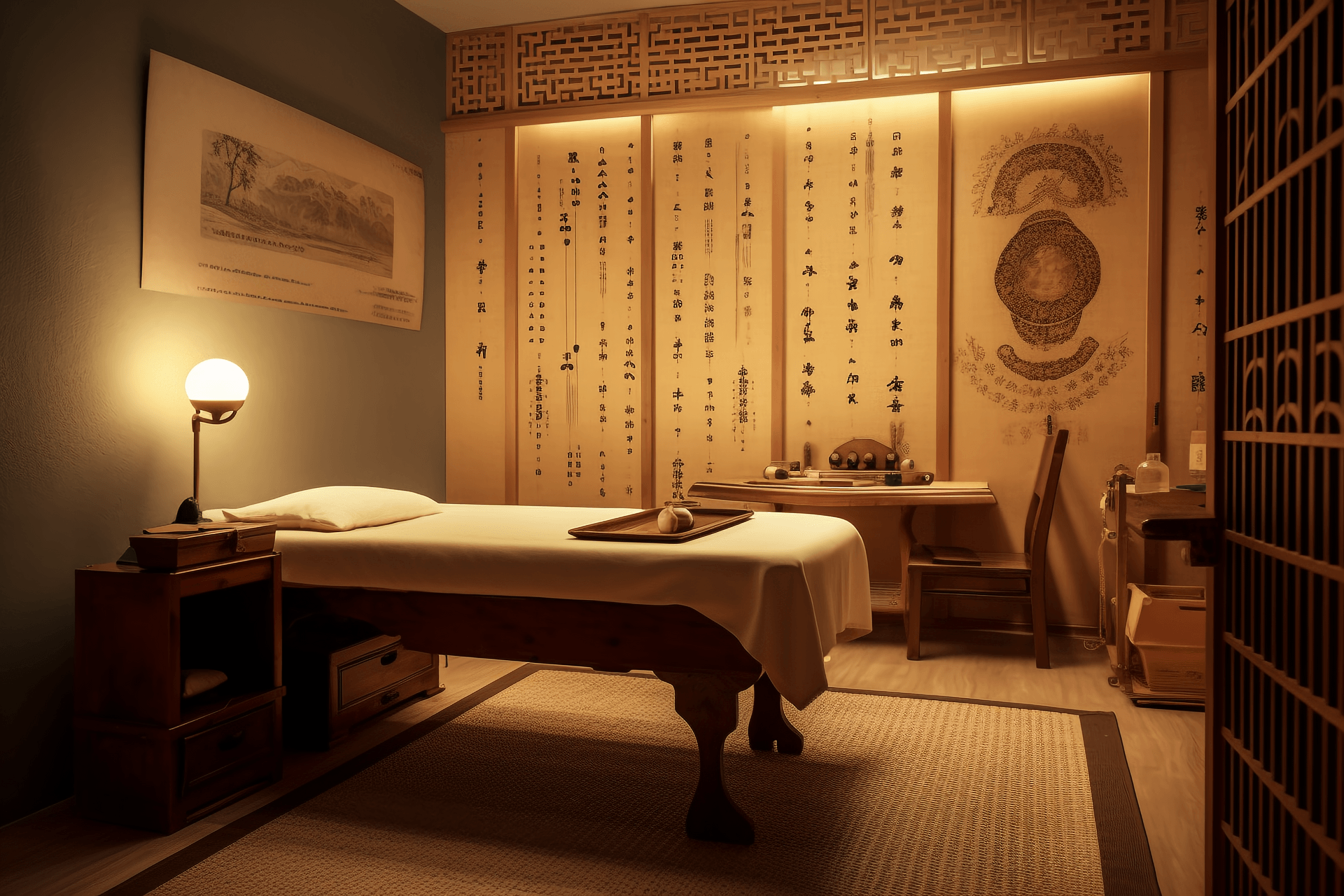Moxibustion with interval, also known as moxibustion with barrier, refers to the method of moxibustion with a barrier placed on the acupoints under the moxa stick. It is easily accepted by patients because of its mild heat and dual effects of moxibustion and medication. There are different types of moxibustion methods depending on the type of barrier used. The most commonly used ones are ginger barrier moxibustion and garlic barrier moxibustion.
Ginger Barrier Moxibustion:
Ginger barrier moxibustion is a moxibustion method that uses ginger slices as the barrier. Take a piece of fresh ginger and cut it into thin slices about 0.3-0.5cm thick (the size depends on the acupoint and the size of the moxa stick). Pierce several holes in the center with a needle, place it flat on the acupoint, and ignite the moxa stick for moxibustion. When the patient feels a burning sensation, the ginger slices can be slightly lifted along with the moxa stick, allowing them to temporarily leave the skin, then put them back down, or immediately replace the moxa stick and continue the moxibustion. Repeat this process according to the condition until the local skin becomes red and moist. This method is simple and easy to perform, and generally does not cause burns, so it is widely used in clinical practice. Ginger has a pungent taste and a slightly warm nature. It has the effects of inducing sweating, dispersing cold from the stomach, warming the middle, strengthening the spleen, and stopping vomiting. Therefore, this method is often used to treat external pathogenic conditions and cold-related diseases, such as cold, cough, rheumatism, vomiting, abdominal pain, and diarrhea.
Garlic Barrier Moxibustion:
Garlic barrier moxibustion is a moxibustion method that uses garlic as the barrier. It has been widely used in ancient times and is described in many traditional Chinese medicine books. The earliest record can be found in the "Emergency Prescriptions Kept Behind the Elbow": "To treat swelling, take a single garlic clove, cut it in half, about one fen thick, and place it on the swollen area. The moxa stick should be the size of a parasol seed and moxibustion should be performed on the garlic. If the swelling does not disappear, moxibustion should be repeated several times. It is better to moxibustion more. Do not use excessive heat. If the patient feels pain, lift up the garlic slightly and replace it with a new one without damaging the skin." The "Thousand Gold Prescriptions" records its use for treating lymphadenopathy, the "Introduction to Medicine" mentions its use for treating abscesses and ulcers, and the "Medical Classic of the Yellow Emperor" describes its use for treating sores and toxins.
The commonly used methods in clinical practice include garlic slice moxibustion and garlic paste moxibustion. Cut a large garlic clove into slices about 0.3-0.5cm thick or grind it into a paste, pierce several holes in the middle with a needle, and place it on the acupoint or affected area (such as the head of a non-ruptured abscess). Ignite the moxa stick on top and perform moxibustion for 2-3 cycles, then replace the garlic slices. Each acupoint can be moxibusted 5-7 cycles. Because garlic juice is irritating to the skin and can cause blisters after moxibustion, precautions should be taken. This method is often used to treat non-ruptured ulcers and abscesses.
Blanket moxibustion or long snake moxibustion: For this method, take 500g of garlic, peel it and mash it into a paste. Have the patient lie prone and spread the garlic paste in a layer about 2.5cm thick and 6cm wide from the Dazhui acupoint to the Yaoshu acupoint on the spine. Use cotton paper to wrap and seal the area, then knead and compact the moxa wool with your hands and place it in the middle of the garlic paste. Ignite the moxa stick at three points (head, middle, and tail) until the patient tastes garlic in their mouth. After moxibustion, moisten the cotton paper with warm water, remove the garlic paste. Due to the stimulation of the garlic paste and the heat, blisters often form in the middle of the spine, so protection should be taken. This method has the effects of reducing swelling, detoxification, pain relief, and dispersing. It is currently used in clinical practice to treat abscesses, ulcers, boils, lymphadenopathy, and snake or scorpion bites, as well as abdominal masses and pulmonary tuberculosis.
Salt Barrier Moxibustion:
Salt barrier moxibustion is a moxibustion method that uses salt as the barrier. Because this method is only suitable for the navel area, it is also called Shenque moxibustion.
The method is as follows: the patient lies supine, a suitable amount of pure and dry salt is finely ground or heated, and filled into the navel. Then ginger slices and moxa sticks are placed on top for moxibustion. If the patient's navel protrudes, wet noodles can be used to surround the navel like a well, and then salt is filled in the navel for moxibustion, similar to ginger barrier moxibustion. The purpose of adding ginger slices is to separate the salt and the source of fire from the moxa stick to prevent the salt from exploding when it encounters fire and causing burns. In clinical practice, moxibustion is generally performed for 3-9 cycles, and for acute conditions, moxibustion can be performed more according to the condition, regardless of the number of cycles. This method has the effect of restoring yang and rescuing collapse for acute abdominal pain, vomiting, diarrhea, cold limbs, and shock. For conditions where sweating leads to yang deficiency, cold limbs, and faint pulse, continuous moxibustion with large moxa sticks can be used without considering the number of cycles, until sweating stops, pulse returns, body temperature rises, and symptoms improve.
Zhou's All-Purpose Moxibustion Pen:
Zhou's All-Purpose Moxibustion Pen is a moxibustion tool developed by Dr. Zhou Meisheng, a well-known traditional Chinese medicine doctor in China. It is based on ancient methods such as the Thunder Fire Needle, Guanyin Rescue Needle, Yin Disorder Detoxification Needle, and Yang Suì Ingot, with improvements made based on its efficacy and operational characteristics. It is officially named "All-Purpose Moxibustion Pen" because most operations can be completed within 1-2 minutes, making it a "rapid moxibustion method".

Zhou's All-Purpose Moxibustion Pen





